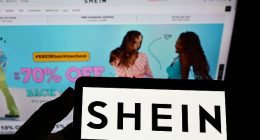
The feedback you get from a prototype is essential to moving forward with a product or idea.
December 20, 2018 7 min read
Opinions expressed by Entrepreneur contributors are their own.
I spend a lot of time working as a designer with tech companies and entrepreneurs. Here’s a funny thing I’ve noticed. Everyone wants to prototype — to create a fast and just-real-enough version of their new product — to ensure they’re building the right thing, but no one has the time.
Related: 6 Reasons Why You Should Prototype Your Idea Before Developing It
So, they do things like build the product and sneak in cheeky prototypes on the side to inform product iteration (and, if the initial launch premise is wrong, product revolution). Almost surreptitiously. Kind of like they’re having an affair with the prototype.
As a designer, I’m always looking for workarounds that signal what people need, and the “affair-with-prototype” is a classic one. It signals that designers, entrepreneurs and product managers know the value of prototyping (validating the desirability and viability of a new product), but have time and budget constraints that prevent them from taking that step.
To me, the affair-with-prototype workaround signals an opportunity to extract benefit from a quick and scrappy prototype and get traction signals (indications that there’s both a user need and a business case) behind a new idea — even faster than you would from an MVP. In fact, building an MVP that hasn’t been preceded by a prototype is the slowest and most expensive way to test your hypothesis — because if you’ve gotten the premise sufficiently wrong in MVP, rework will be expensive!
As part of our venture design practice at IDEO, we’ve been building behavioral prototypes, which allow us to get market signals in as little as a day.
Often, when people envision prototypes, they’re attitudinal ones. Attitudinal prototypes are things like paper prototypes or clickable prototypes. Show them to someone, prefaced by the statement “imagine if … ” to get their reaction and attitude (they don’t actually function).
Related: From Prototype to Production: 3 Things You Must Do
A behavioral prototype is a functional, if rudimentary, business that works for the customer — a simple physical or digital experience with which people can actually accomplish something. Another name for it is a works-like, unscalable product, or WUP. While customers know they’re not products available in market, they can still use them to get something done. By observing people interacting with the prototypes, we can see how they would behave if we created a scalable version.
Behavioral prototypes give us confidence that our product will not only meet people’s needs, but also that we can build a sustainable business around it, testing desirability and viability at once. They short-circuit the time and effort normally required to get traction signals and product-market fit.
For example, working with a company that wanted to encourage moms, who de-prioritize self-care, to exercise more, we crafted a set of curated products and experiences that could help them naturally integrate physical activity into their lives.
Our WUP was a day-long, pop-up experience at a local cafe, where we offered women five kits for preorder. Each kit promoted unique benefits, like interacting with nature and connecting with others, all while exercising. We were quickly able to home in on the type of products that resonated and would lead to purchase.
Behavioral prototypes often get flack as limited tools that wouldn’t yield the same insights in highly regulated industries. But, we’ve seen them deliver there, too. We partnered with a major bank to create a new debit card supporting parents as they switched teenagers from cash to plastic. To see how parents (and kids!) would react to a card parents could observe and control, we leveraged an existing piece of technology — pre-paid travel cards. Setting it up with kids’ allowances, we created a safe spending limit, monitored purchases and sent notifications to parents. Without investing in technology or hitting any regulatory barriers, we could immediately see that parents felt a sense of calm from this (as yet non-existent!) product.
Well-known companies have used these techniques as well, both to confirm initial hypotheses for their businesses, and to iterate on an initial concept. For instance, DoorDash, the delivery startup which has raised nearly $1 billion in funding and was recently valued at $4 billion, started with a WUP that took the form of a simple landing page called PaloAltoDelivery.com, on which co-founders Stanley Tang and Andy Fang had linked PDFs of a few local restaurant menus and listed their personal phone number. Each day they got more and more food orders, which they delivered personally, until they were confident they had hit upon an unmet need.
Related: Design Vs. Function: How Should You Start Prototyping?
WUPs can extend the growth of existing businesses as well. At a slightly later stage of its development, Airbnb wasn’t gaining traction with listings in New York City. When they realized the hosts were not presenting their listings with quality that aligned with the price-point, co-founders Joe Gebbia and Brian Chesky flew to the city with a rented camera and took high-resolution photos of as many apartments as they could — a behavioral prototype for a new photography service offering. Within a month, revenue in the city had doubled. And, once they created a scalable photography service using freelancers, that same observation solved problems in cities around the world.
You’ll notice a few commonalities in these examples:
1. They were fast. All WUPs tested pretty significant hypotheses really quickly — usually in less than a week, for a product or service people could actually engage with and get something out of.
Ask yourself: What kind of prototype can be created to learn from in a day? In a week?
2. They were scrappy and required almost no build. The WUPs leveraged existing materials and resources in a way that allowed people to interact with the product as though it were a functional business.
Ask yourself: What existing materials and resources could help you convey the experience without writing code?
Related: Rapid Prototyping: The Best Route to Happy Customers
3. Each WUP helped the founders not only gain confidence that they were building a product people would like, but gain assurance that they were building a product people would value — and pay for.
Ask yourself: How can we incorporate a call-to-action that foreshadows willingness to pay?
4. Each WUP avoided elbow grease bias. Because the founders spent almost no time and money on these prototypes, they weren’t invested in them. If they’d failed, or led to significantly different insights than expected, it didn’t feel like sunk costs would prevent making a change.
Ask yourself: How can I minimize my — and my company’s — perceived investment so we don’t bias the results?
All of this goes a long way toward providing early confidence that what you’re building is right, and that you won’t have a massive redesign bill later on. As tempting as an “affair-with-prototype” might be, it’s time to stop thinking of prototypes as things that slow your process or harpoon your budget and instead bring them out into the open again.
So go on, stop having affairs and date your ideas before you commit. Because once you’re married to a product or service, it’s not easy to call it quits.
This article is from Entrepreneur.com









